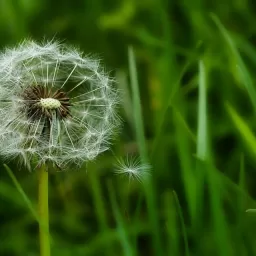Cutting Foam Wind-Turbine Blades – Key to Efficient Power
Without blades, your wind turbine can’t extract any power from the wind. There are many ways to make wind turbine blades, PVC pipe, foam, or fiberglass just to name a few. Each different material allows for different types of shapes to be built. PVC pipe is the least flexible material, and fiberglass is the most.
If you decide to use foam, you will be able to take advantage of a light, rigid material that can be shaped into many different profiles. Cut foam wind turbine blades will allow you to choose a specific airfoil shape as well as a planform of your blades to increase the efficiency of your turbine. To start creating your foam blades, you’ll first need to know the diameter of your turbine disc and then the length of each blade.
Once you’ve determined the size of your blades and chosen an airfoil shape (there are many databases of airfoils online), you’re ready to plan and cut your foam wind turbine blades. Start by gluing the foam together so that the overall foam block is larger than the thickest point of your airfoil. Use craft glue or wood glue for this, do not use superglue or spray glues as they can dissolve the foam. Try gluing together a few small test pieces with your chosen glue, this will tell you how your foam will react with it.
Now it’s time to cut your foam turbine blades. First use a hot wire cutter to cut your foam block to length. Second, trace your airfoil profile on each end of the block of foam, and use a hot wire cutter to trace that profile through the entire block. Alternatively, you can use the two profiles on each end as guides to sand down the blade on a belt sander. This may give you more control over the shape of the blade overall.
Finishing the foam wind turbine blade is key to longevity and durability. A surface coating of some sort is necessary to ensure that the blade will withstand inclement weather. Perhaps the best and most economical surface coating would be two fiberglass layups, followed by a coat of paint. When sanded smooth, a fiberglass surface is low drag and can provide for a more efficient wind turbine than simply using a foam blade.
Additional finishing can include a spar made of a wooden (or carbon fiber) dowel fed through the center of the airfoil in order to add rigidity to the blade itself. This will again enhance the blade’s durability and allow for a longer lasting turbine especially during storms or other inclement weather.
Foam turbine blades are very economical and a fast way to make sure your turbine is creating the most power possible from the available wind. They are light and durable when finished properly and make for a good weekend sub-project when building a wind turbine.
wind power
#Cutting #Foam #WindTurbine #Blades #Key #Efficient #Power
Will be pleased to have you visit my pages on social networking .
Facebook page here.
Twitter account is here.
Linkedin account here
Post byBedewy for info askme VISIT GAHZLY




